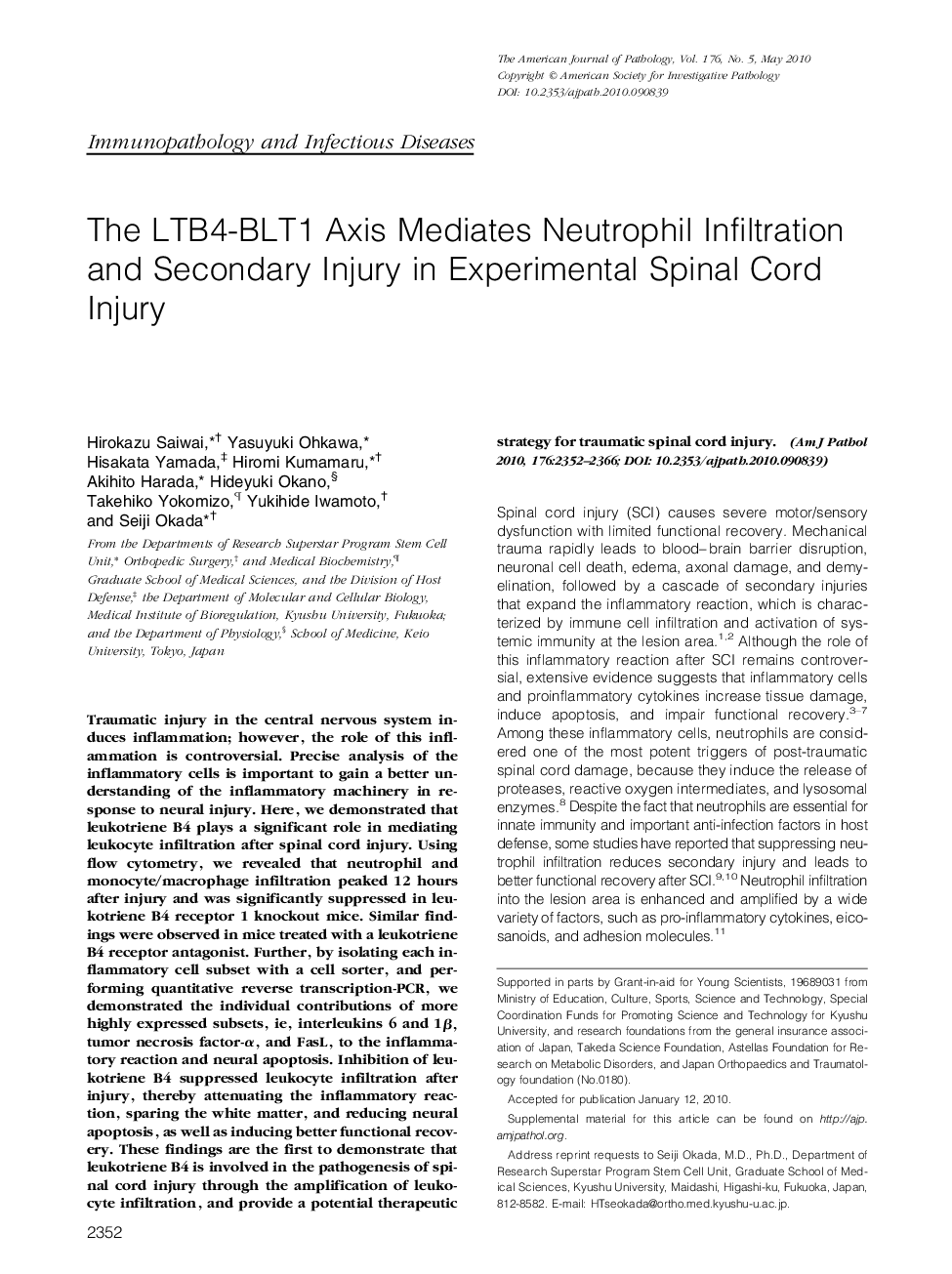| Article ID | Journal | Published Year | Pages | File Type |
|---|---|---|---|---|
| 5935721 | The American Journal of Pathology | 2010 | 15 Pages |
Abstract
Traumatic injury in the central nervous system induces inflammation; however, the role of this inflammation is controversial. Precise analysis of the inflammatory cells is important to gain a better understanding of the inflammatory machinery in response to neural injury. Here, we demonstrated that leukotriene B4 plays a significant role in mediating leukocyte infiltration after spinal cord injury. Using flow cytometry, we revealed that neutrophil and monocyte/macrophage infiltration peaked 12 hours after injury and was significantly suppressed in leukotriene B4 receptor 1 knockout mice. Similar findings were observed in mice treated with a leukotriene B4 receptor antagonist. Further, by isolating each inflammatory cell subset with a cell sorter, and performing quantitative reverse transcription-PCR, we demonstrated the individual contributions of more highly expressed subsets, ie, interleukins 6 and 1β, tumor necrosis factor-α, and FasL, to the inflammatory reaction and neural apoptosis. Inhibition of leukotriene B4 suppressed leukocyte infiltration after injury, thereby attenuating the inflammatory reaction, sparing the white matter, and reducing neural apoptosis, as well as inducing better functional recovery. These findings are the first to demonstrate that leukotriene B4 is involved in the pathogenesis of spinal cord injury through the amplification of leukocyte infiltration, and provide a potential therapeutic strategy for traumatic spinal cord injury.
Related Topics
Health Sciences
Medicine and Dentistry
Cardiology and Cardiovascular Medicine
Authors
Hirokazu Saiwai, Yasuyuki Ohkawa, Hisakata Yamada, Hiromi Kumamaru, Akihito Harada, Hideyuki Okano, Takehiko Yokomizo, Yukihide Iwamoto, Seiji Okada,
